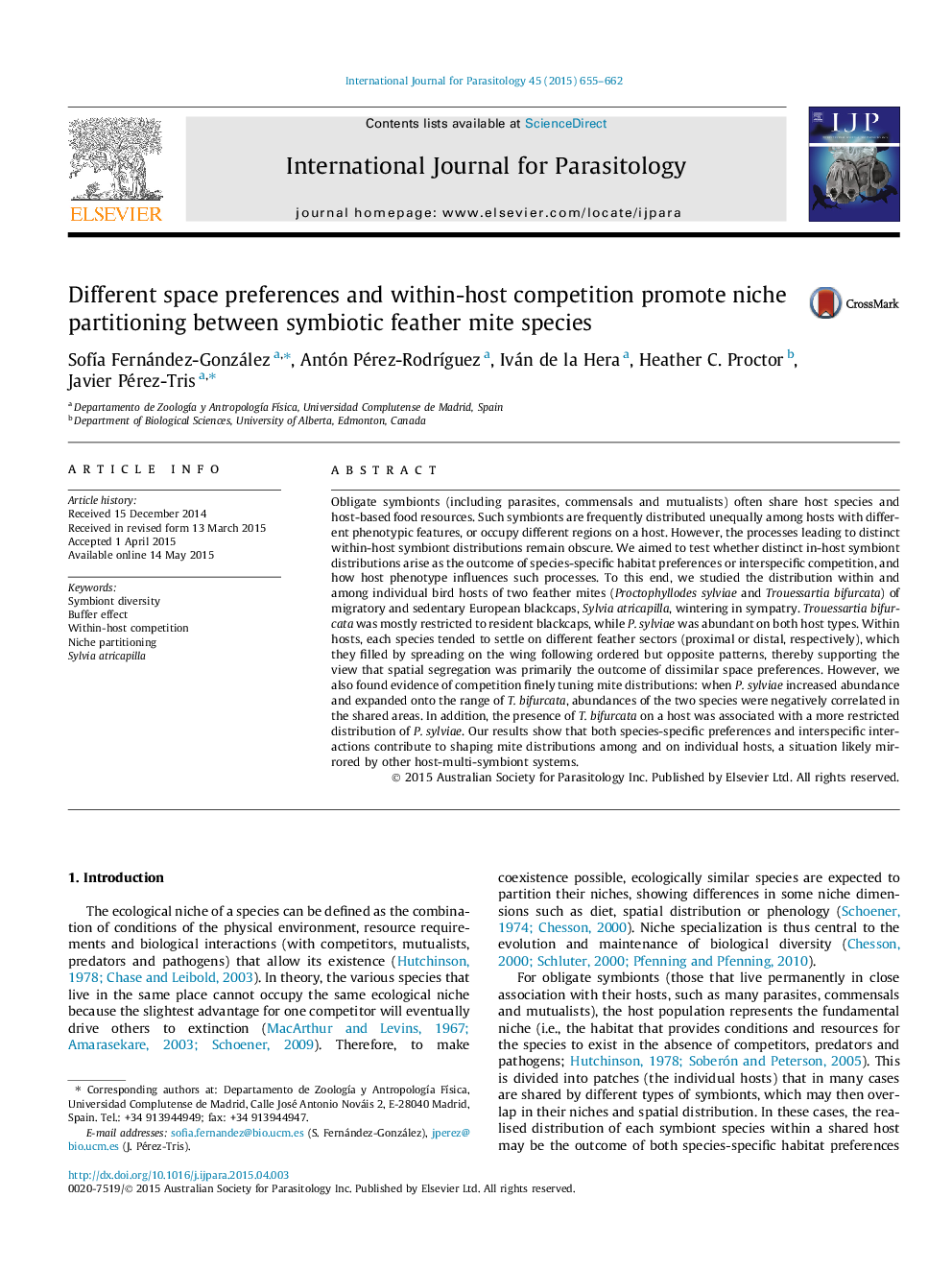| کد مقاله | کد نشریه | سال انتشار | مقاله انگلیسی | نسخه تمام متن |
|---|---|---|---|---|
| 2436019 | 1553725 | 2015 | 8 صفحه PDF | دانلود رایگان |
• The distribution, within and among individual hosts, of two feather mite species is reported.
• Feather mites fill host wings following ordered (nested) patterns.
• Specific preferences and interspecific competition influence mite distributions.
• Mite distributions change among hosts with different migratory behaviour.
Obligate symbionts (including parasites, commensals and mutualists) often share host species and host-based food resources. Such symbionts are frequently distributed unequally among hosts with different phenotypic features, or occupy different regions on a host. However, the processes leading to distinct within-host symbiont distributions remain obscure. We aimed to test whether distinct in-host symbiont distributions arise as the outcome of species-specific habitat preferences or interspecific competition, and how host phenotype influences such processes. To this end, we studied the distribution within and among individual bird hosts of two feather mites (Proctophyllodes sylviae and Trouessartia bifurcata) of migratory and sedentary European blackcaps, Sylvia atricapilla, wintering in sympatry. Trouessartia bifurcata was mostly restricted to resident blackcaps, while P. sylviae was abundant on both host types. Within hosts, each species tended to settle on different feather sectors (proximal or distal, respectively), which they filled by spreading on the wing following ordered but opposite patterns, thereby supporting the view that spatial segregation was primarily the outcome of dissimilar space preferences. However, we also found evidence of competition finely tuning mite distributions: when P. sylviae increased abundance and expanded onto the range of T. bifurcata, abundances of the two species were negatively correlated in the shared areas. In addition, the presence of T. bifurcata on a host was associated with a more restricted distribution of P. sylviae. Our results show that both species-specific preferences and interspecific interactions contribute to shaping mite distributions among and on individual hosts, a situation likely mirrored by other host-multi-symbiont systems.
Figure optionsDownload high-quality image (146 K)Download as PowerPoint slide
Journal: International Journal for Parasitology - Volume 45, Issues 9–10, August 2015, Pages 655–662
